In the back of every classroom there's a kid who doodles in the margins of their notebooks and worksheets, backpack full of pens and markers. During lunch breaks they catch up on the latest stories in Shonen Jump. Their dream is to one day have their own story run alongside the greats like One Piece or My Hero Academia. What's the first step to stardom? Many might say making a doujinshi, a self-published comic book, is a crucial first step.
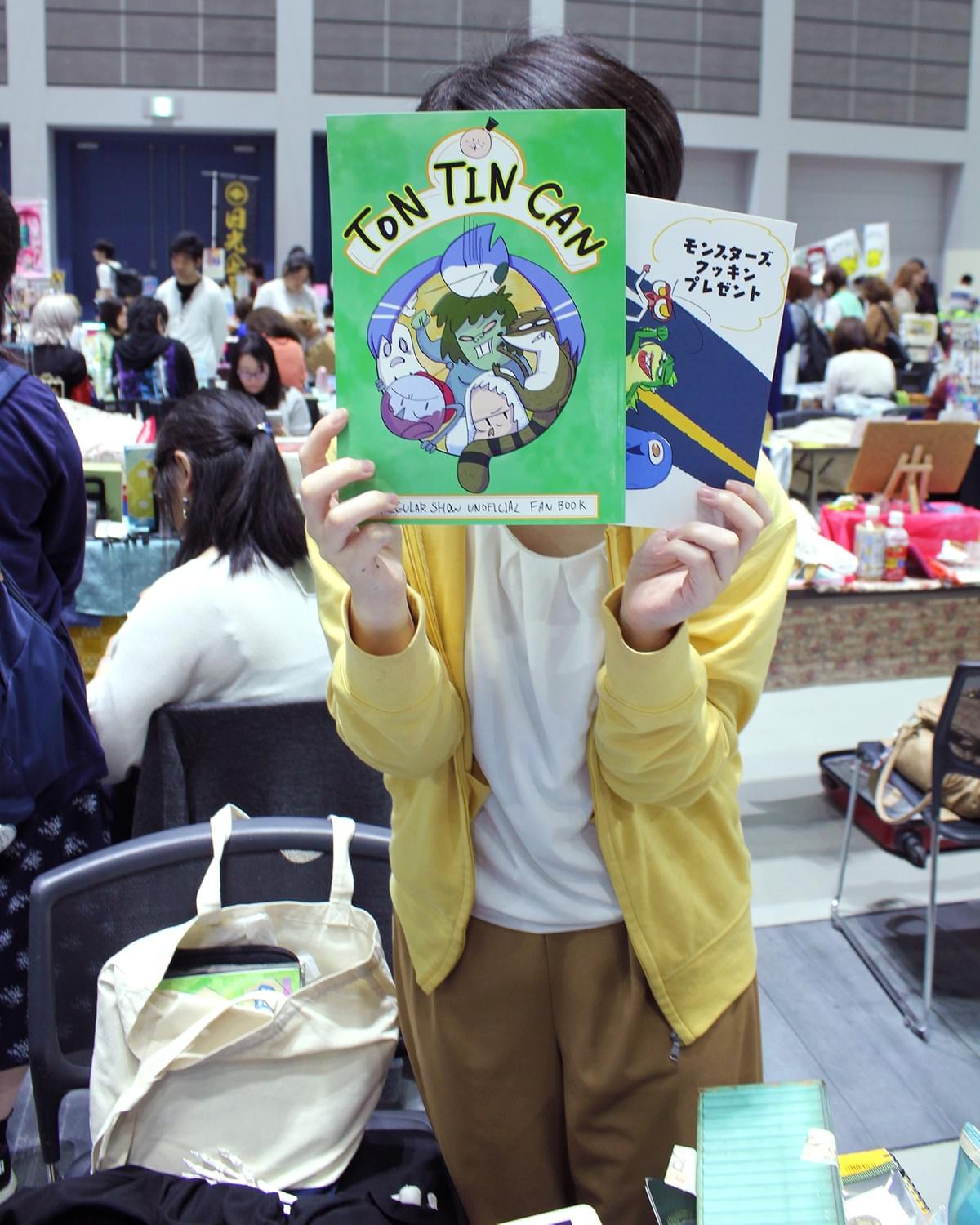
That's where a comic market comes in―a place where you can bring that comic book you made on your own dime with your own ink, sweat, and sleepless nights. The biggest one in Japan, Comiket, is held twice a year in Tokyo. But did you know every two months or so, Sendai hosts its own? I took a trip to a recent Sendai Comiket to see what it was all about.
That's where a comic market comes in―a place where you can bring that comic book you made on your own dime with your own ink, sweat, and sleepless nights.
Dream Messe Hall, the home of Sendai Comiket, is just a 15-minute walk from the JR Nakano-Sakae Station. I join the caravan of suitcase-pulling fans making their way to the event. I have a feeling we are all headed the same way because many in the crowd are decked out in gothic Lolita dresses and carrying curiously empty tote bags.
Even from the entrance gate you can already see people roaming around in all kinds of costumes, from robot heroes to magic star princesses. This is the other main draw of a comic market: cosplay, a chance for artists of another kind to shine. Handmade costumes and hours of makeup application turn these fans into their favorite characters for this special event. Swarmed by photographers, they spend the day striking poses they’ve practiced all month.
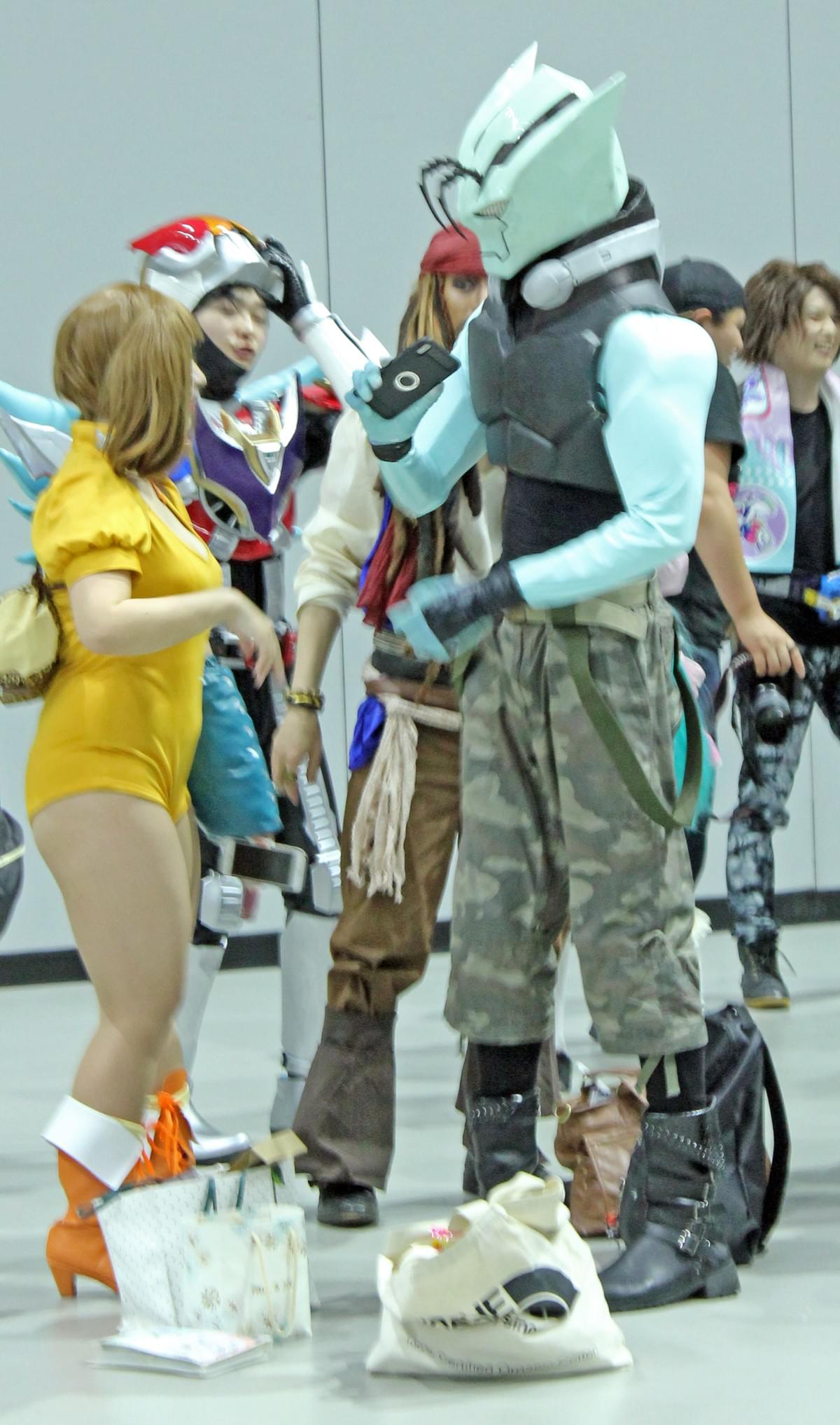
The ticket booth of the event is really just a catalog sales counter. To enter Sendai Comiket you have to buy the event catalog, which lists every artist and vendor participating that day. Catalog in hand, you can finally enter the main event hall. When I arrive, it’s already bustling with row upon row of amateur comic book artists, jewelry makers, and tchotchke sellers, some of who are dressed in costume like Sasaki Erina is.
Erina isn't really dressed as anyone in particular, but her rich purple wig and matching contact lenses draw me to her table. She has a few piles of books and is hoping to sell out by the end of the day. This is her fifth Comiket, but she's been into the doujin scene ever since junior high school. She is happy to see non-Japanese people, such as myself, enjoying the event and really wishes more would come. It's exciting for Japanese artists to see how people from abroad react to their work.
Shortly after our chat I spot the first other foreign patrons I’ve seen so far at the event: Scott and Cody, English teachers living in Miyagi. The 2020 Olympics in Tokyo seemed to interfere with the Tokyo Comiket, so the closer and more convenient Sendai one was a boon for them.
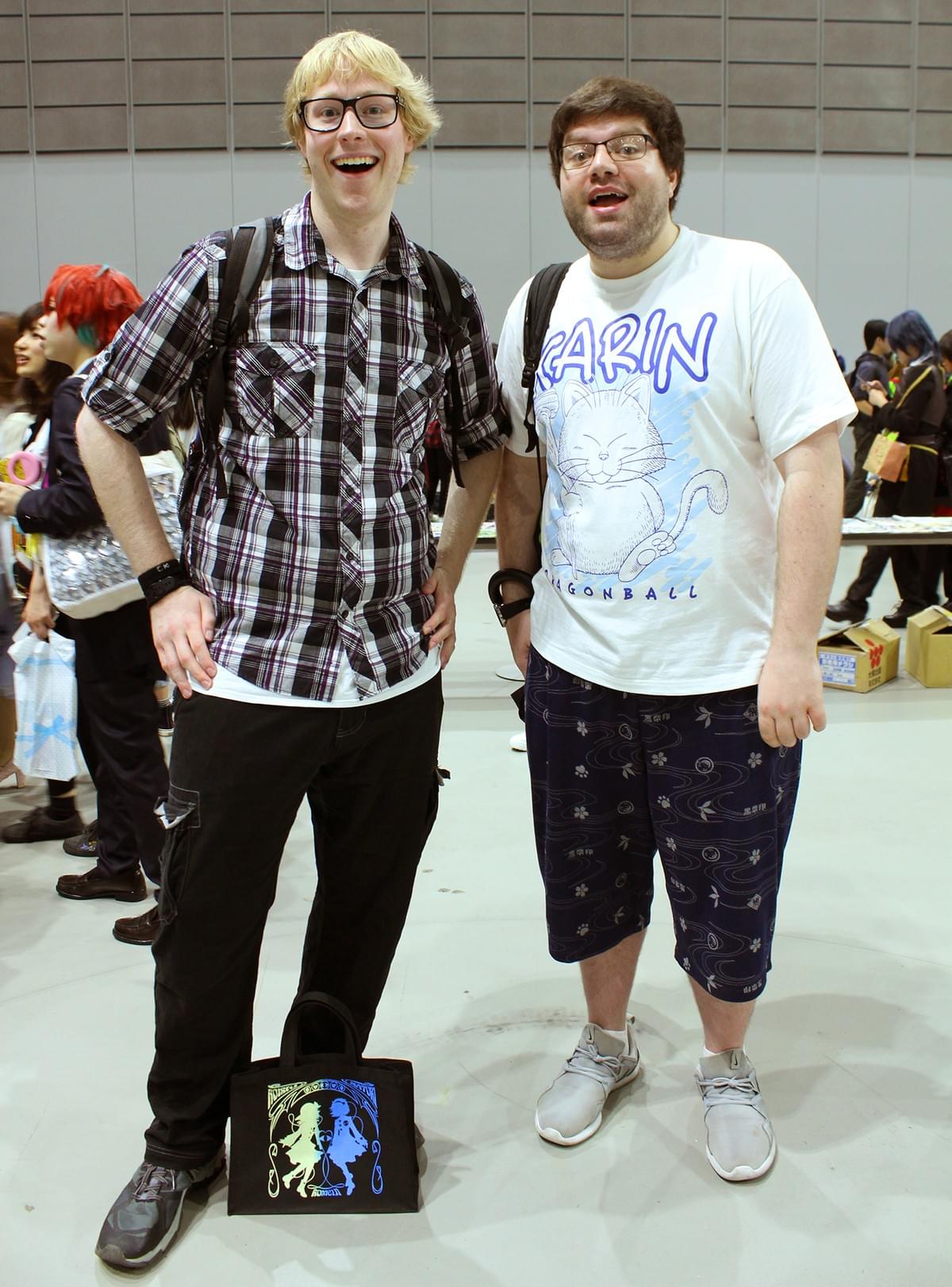
Cody tells me he’s looking forward to striking up some conversations with the vendors and putting to use the conversational Japanese he and Scott have been studying. Both are on the lookout for merchandise like cellphone straps and Jojo's Bizzare Adventure bags. We all agree the bags are definitely a nice buy.
The hall is divided into three main sections. The first section is the main doujin market. There are at least a hundred different tables and more than a hundred different artists (some sharing two or three to a table) all selling books, buttons, and original art. The hall's sound system fills the air with quirky game and anime soundtracks, a fitting backdrop to all the sights.
The background music especially complements the cosplayer area. That's where I meet Amu Aran, a local who came dressed as the character Stocking from the anime Panty and Stocking. I have no idea what that show is about, but she has props and poses ready for the camera. This is her sixth Comiket. She tells me she's been into cosplay ever since childhood.
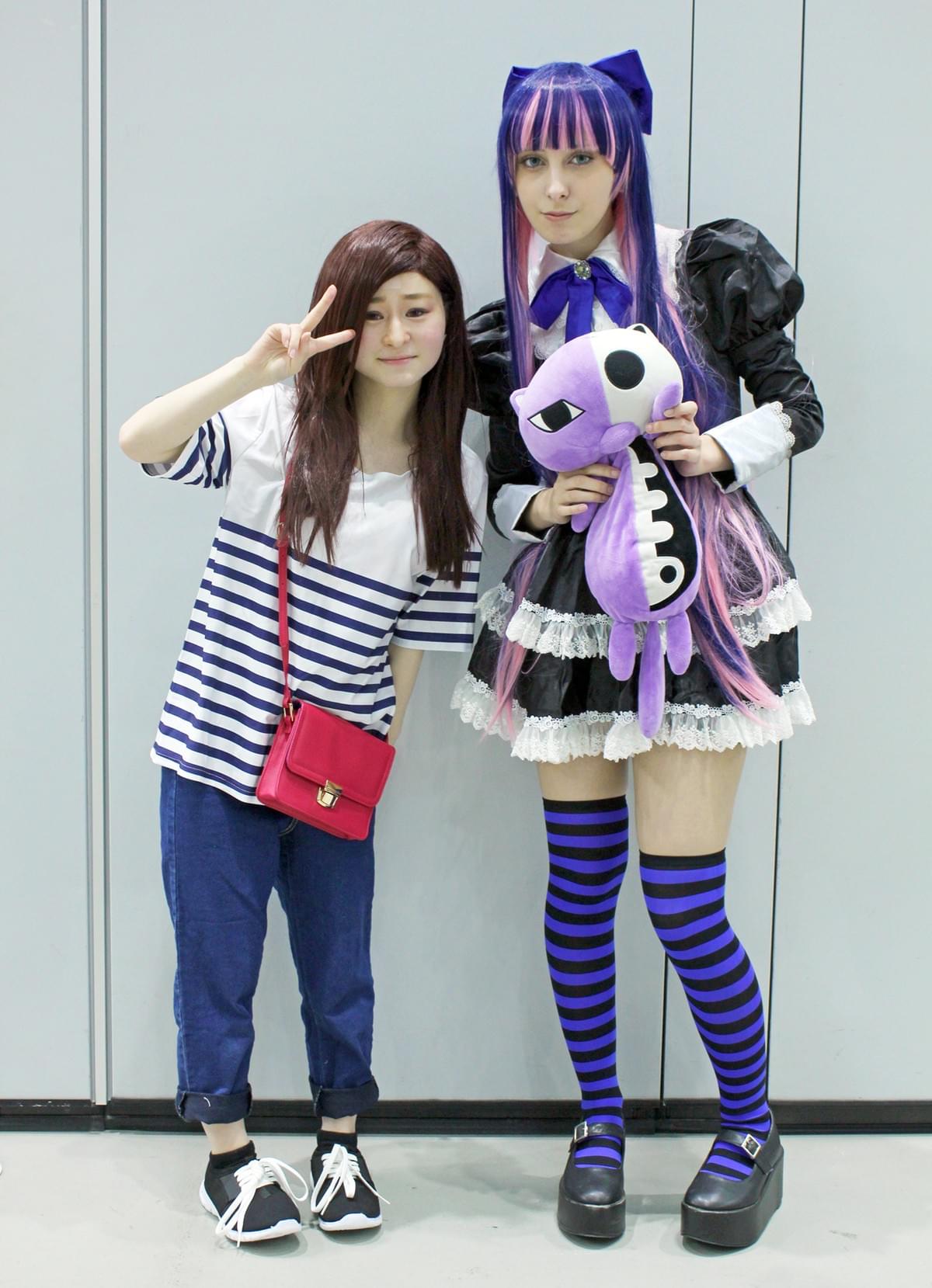
So long as you ask for permission beforehand, you can take as many pictures of the cosplayers as you want. Just remember to be polite and smile and use common courtesy.

The left and final section of the hall is where the sponsors that help run the event have their booths. These aren't just any sponsors―these are folks that specialize in helping aspiring artists self-publish their comics. One booth I visit has dozens of print samples to help artists choose what kind of paper or bookbinding they want for their work: foil lettering, embossed covers, purple glassine…you name it. All the artist has to provide is a PDF manuscript and these fine people will turn it into a volume that stands out from the pack.
That's where the event comes full circle: Sendai Comiket is a place where artists can test the waters to see how their work might be received by the general public. It is a place where they can make personal connections with readers and get instant feedback. If an artist sells out of all the books they bring, they know they're on the right track.
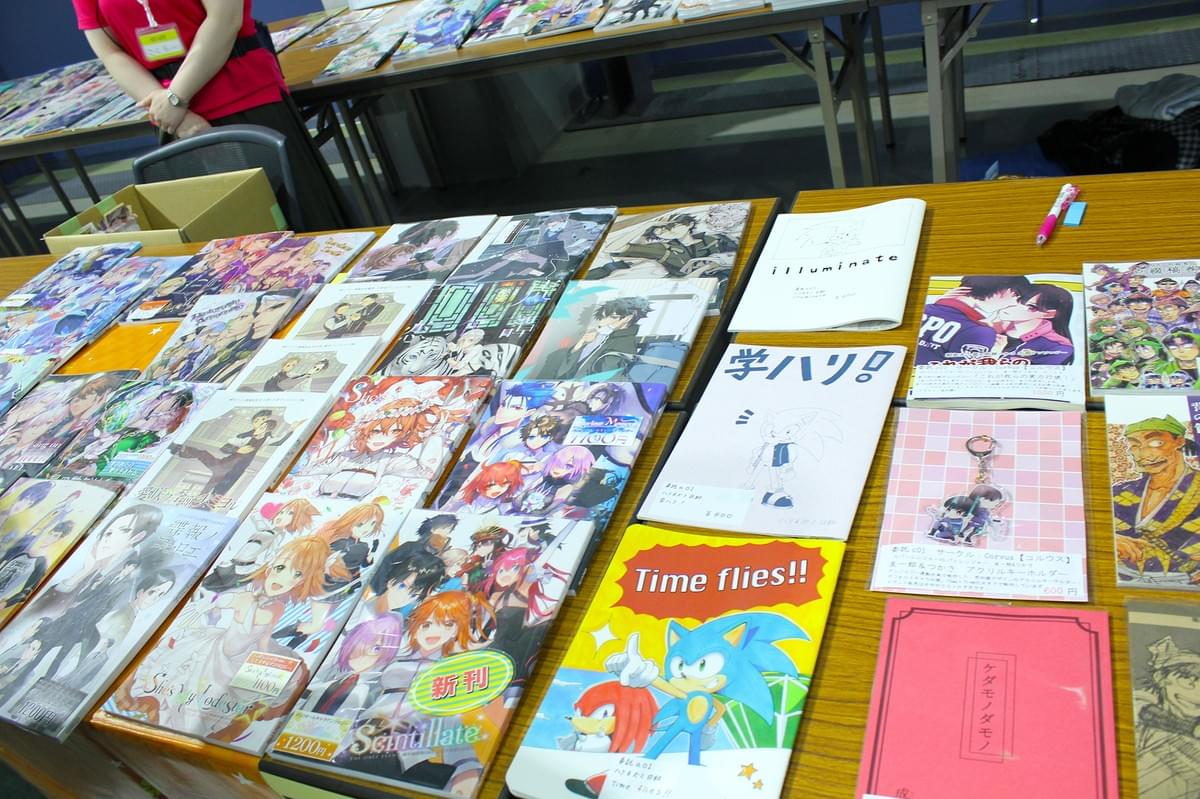
Comic books are a primarily visual medium. Even if you can't read all the words, you can still enjoy the storytelling done by the illustrations. Sendai Comic Market is a chance to access these local publications and meet these local artists. Come see what they've been doodling in the margins of their notebooks and worksheets all these years.
Sendai Comiket (仙台コミケ)
Upcoming dates: September 8 (2019), November 11 (2019), January 13 (2020), March 29 (2020)
Hours: 11:00–15:00
Admission: 800 yen (may vary by date)
Official website: youyou.co.jp
Venue: Yume Messe Miyagi (夢メッセみやぎ)
Address: 3-chome-1-7 Minato, Miyagino-ku, Sendai, Miyagi 983-0013
Access: 15-minute walk from Nakano-Sakae Station

